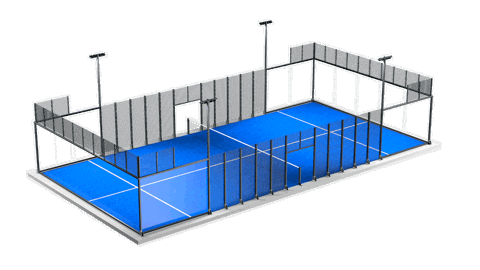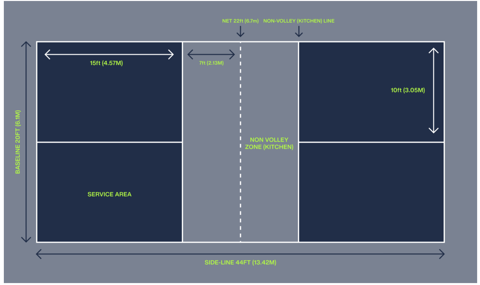18 Dec 2023
With padel and pickleball soon opening at Foxhills, here's a quick guide to to the two fastest growing sports in the world. Both are easy to learn, fun, fast and social.
Padel is typically played in doubles in an enclosed court. It is much like a cross between tennis and squash where the ball can bounce off the glass wall or metallic mesh that surrounds the court.

Padel is played in pairs as doubles.
Padel uses the same scoring system as tennis (15-30-40). Normal deuce at 40-40
However, the top players in the world (World Padel Tour) play a deciding point ("El punto del Oro")
Best of 3 sets. One set is up to 6 games. Tie break to 7 points at 6-6 in a set.
With regard to the serve, the following rules apply:
The following are allowed:
The opposition wins a point if:
The ball can be taken out of the air by any player except on the initial serve and the return of serve.
Put tennis, badminton and ping pong in a cocktail shaker, and you’ve got Pickleball. The court is about a quarter the size of a tennis court, with a slightly lower net.

Played in doubles or singles using pickleball paddles and a pickleball ball over a central net.
A game is usually played up to 11 points win by 2 clear points. If time constraints win by 1.
Serves are diagonal, like tennis, starting on the right-hand side and alternating.
The serve must:
● Clear the NON-VOLLEY ZONE (including the non-volley line)
● Be played underhand with the paddle below the wrist and below the waist
● Keep both feet behind the back line when serving
● Serve the ball from the air without being bounced unless using a drop serve
● A 'drop serve' is allowed. Server releases the ball from a height and strikes the ball with either a forehand or backhand motion after the ball bounces. The ball can bounce more than once before being struck. The release of the ball must be visible to the receiver (and referee/umpire if there is one)
● Announce the score before serving, 3 numbers: server’s score; receiver’s score; server number (1 or 2) A server gets 1 service attempt. At the start of a new game only 1 player in a team serves, initially after saying the score 0-0-2. When the service is lost and ‘Side Out’ occurs, then both players in the opposing pair get to be the server.
A point can only be won by the serving player/team. A ball that hits a line is ‘in’, unlike in squash when a ball hitting a line is ‘out’.
Each team must play their first shot off the bounce. That is, the receiving team must let the serve bounce and the serving team must let the return of the serve bounce before playing it. Once these two bounces have occurred, the ball can either be volleyed or played off the bounce.
The struck ball, whether volleyed or hit after a single bounce, must cross to the opponent's side of the court in the same manner as a tennis shot (i.e. without bouncing on the striker's side of the net or hitting a ceiling etc).
Volleys are only allowed when both of the player’s feet are behind the non-volley zone line. Also, the point is lost if the volleyer’s momentum carries the player into the NON-VOLLEY ZONE after volleying (like running into the tennis net).
Before serving, the server calls out the score; the server’s score first and then the receiver’s score.
The server’s score determines the side from which to serve. Serves are executed on the right side of the court when the server’s score is an even number (0, 2, 4, ...), the left side when the server’s score is odd (1, 3, 5, …)